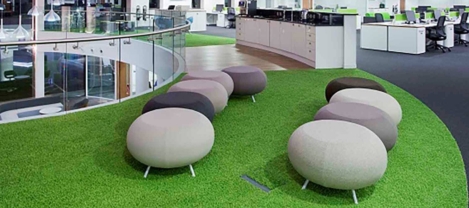September 19, 2015
Quiet at work + Office design and conflict + The on-demand revolution 0
 In this week’s issue; Dan Callegari lists ten unusual ways to ensure peace and privacy in the workplace; Sara Bean says senior executives are unaware of the effects of ‘change fatigue’ in their organisations; and Mark Eltringham notes a growing acceptance of sit/stand furniture as a standard workstation option. In news; the results of a new study which found men and women are likely to react differently to specific types of office layout; the introduction of the revised version of one of the world’s most popular environmental standards and SMEs fail to embrace effective wellbeing programmes, despite appreciating their role in future growth. And why is there a growing dread of the influx of the latest generation Z into the workplace? Check out our new events page, subscribe for free quarterly issues of Work&Place and weekly news here., You can follow us on Twitter and join our LinkedIn Group to discuss these and other stories.
In this week’s issue; Dan Callegari lists ten unusual ways to ensure peace and privacy in the workplace; Sara Bean says senior executives are unaware of the effects of ‘change fatigue’ in their organisations; and Mark Eltringham notes a growing acceptance of sit/stand furniture as a standard workstation option. In news; the results of a new study which found men and women are likely to react differently to specific types of office layout; the introduction of the revised version of one of the world’s most popular environmental standards and SMEs fail to embrace effective wellbeing programmes, despite appreciating their role in future growth. And why is there a growing dread of the influx of the latest generation Z into the workplace? Check out our new events page, subscribe for free quarterly issues of Work&Place and weekly news here., You can follow us on Twitter and join our LinkedIn Group to discuss these and other stories.











 One of the most typical claims that suppliers in this sector make about their products is that they will make people more productive at work. Many go so far as to put numbers on what this means, and usually not just 0.4 percent or whatever but something far more. We can understand why they do this because they are seeking to link workplace productivity to whatever it is they have to sell. This is often tenuous for at least two reasons. The first is that even when such a causal link is demonstrably true, it still assumes that all other things at work are equal, whereas they never are because there are so many factors involved. That is why you will find some people cheerfully working in shabby, cluttered, underlit offices while others mope around unhappily in gilded cages with expensive chairs, soaring daylit atria and olive groves. The second is that such claims simply ignore what makes people tick.
One of the most typical claims that suppliers in this sector make about their products is that they will make people more productive at work. Many go so far as to put numbers on what this means, and usually not just 0.4 percent or whatever but something far more. We can understand why they do this because they are seeking to link workplace productivity to whatever it is they have to sell. This is often tenuous for at least two reasons. The first is that even when such a causal link is demonstrably true, it still assumes that all other things at work are equal, whereas they never are because there are so many factors involved. That is why you will find some people cheerfully working in shabby, cluttered, underlit offices while others mope around unhappily in gilded cages with expensive chairs, soaring daylit atria and olive groves. The second is that such claims simply ignore what makes people tick.




















September 10, 2015
Five ways in which your colleagues might be driving you completely nuts 0
by Mark Eltringham • Comment, News, Wellbeing, Workplace
(more…)